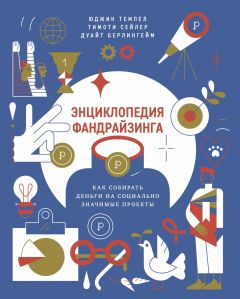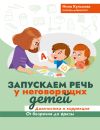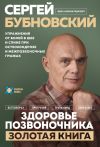
Автор книги: Коллектив авторов
Жанр: О бизнесе популярно, Бизнес-Книги
Возрастные ограничения: +16
сообщить о неприемлемом содержимом
Текущая страница: 43 (всего у книги 44 страниц)
Institute of Medicine. 2011. The Health of Lesbian, Gay, Bisexual, and Transgender People: Building a Foundation for Better Understanding. Washington, DC: National Academies Press.
Internal Revenue Service. 2007. Female Top Wealth Holders by Size of Net Worth. Retrieved from: http://www.irs.gov/uac/SOI-Tax-Stats-Female-Top-Wealthholders-by-Size-of-Net-Worth.
Internal Revenue Service. 2015. “Exempt Organization Annual Reporting Requirements – Overview.” Accessed June 8, 2015: http://www.irs.gov/Charities-&-Non-Profits/Exempt-Organizations-Annual-Reporting-Requirements-Overview-Annual-Return-Filing-Exceptions.
Jackson, William J. 2008. The Wisdom of Generosity: A Reader in American Philanthropy. Waco, TX: Baylor University Press.
Jackson, Kenneth W. Alandra L. Washington, and Russell H. Jackson. 2012. “Strategies for Impacting Change in Communities of Color.” The Foundation Review, 4(1): 54–67.
Jacobs, Jill. 2009. There Shall Be No Needy: Pursuing Social Justice through Jewish Law and Tradition. Woodstock, VT: Jewish Lights Publishing.
Jaschik, Scott. 2005. “Price Check.” CASE Currents, January 4, 2005.
Joseph, James A. 1995. Remaking America: How the Benevolent Traditions of Many Cultures Are Transforming Our National Life. San Francisco, CA: Jossey-Bass.
Josephson, Michael S. 2002. Making Ethical Decisions. Marina Del Ray, CA: Joseph and Edna Josephson Institute on Ethics.
Joulfaian, David. 2000. Charitable Giving in Life and Death (Working Paper). University of Michigan Business School and Office of Tax Policy Research.
Kahana, Eva, T. Bhatta, L. D. Lovegreen, B. Kahana, E. Midlarsky. 2013. “Altruism, Helping, and Volunteering: Pathways to Well-Being in Late Life.” Journal of Aging and Health, 25(1): 159–187.
Kanter, Beth and Allison Fine. 2010. The Networked Nonprofit: Connecting with Social Media to Drive Change. San Francisco, CA: Jossey-Bass.
Karlan, Dean and John A. List. 2007. “Does Price Matter in Charitable Giving? Evidence from a Large-Scale Natural Field Experiment.” American Economic Review, 97(5): 1774–1793.
Katz, Daniel and Robert L. Kahn. 1978. The Social Psychology of Organizations. New York: John Wiley & Sons, Inc.
Kearns, Kevin P. 1996. Managing for Accountability: Trust in Public and Nonprofit Organizations. San Francisco, CA: Jossey-Bass.
Keidan, Charles, Tobias Jung and Cathy Pharoah. 2014. “Philanthropy Education in the UK and Continental Europe: Current Provision, Perceptions and Opportunities.” Centre for Charitable Giving and Philanthropy, Cass Business School, City University London.
Kelly, Kathleen S. 1998. Effective Fund-Raising Management. Mahwah: Lawrence Erlbaum Associates.
Kendell, Kate and Ruth Herring. 2001. “Funding the National Center for Lesbian Rights.” Journal of Lesbian Studies, 5(3): 95–103.
Khanna, Tarun. 2014. “Contextual Intelligence.” Harvard Business Review, September 2014.
Koestner, Richard, Carol Franz, and Joel Weinberger. 1990. “The Family Origins of Empathic Concern: A 26-Year Longitudinal Study.” Journal of Personality and Social Psychology, 58(4): 709–717.
Konrath, Sara. 2014. “The Power of Philanthropy and Volunteering.” In Wellbeing: A Complete Reference Guide, Interventions and Policies to Enhance Wellbeing, Vol. 6, pp. 387–426. Hoboken, NJ: John Wiley & Sons, Inc.
Konrath, Sara, Andrea Fuhrel-Forbis, Alina Lou, and Stephanie Brown. 2012. “Motives for Volunteering Are Associated with Mortality Risk in Older Adults.” Health Psychology, 31: 87–96.
Kotler, Philip and Alan R. Andreasen. 1996. Strategic Marketing for Nonprofit Organizations, 5th ed. Englewood Cliffs, NJ: Prentice Hall.
Kotler, Philip and Karen Fox. 1995. Strategic Marketing for Educational Institutions, 2nd ed. Englewood Cliffs, NJ: Prentice Hall.
Kubler-Ross, Elizabeth. 1969. On Death and Dying. New York: Simon and Schuster.
Kumar, Nirmalya and Jan-Benedict E. M. Steenkamp. 2013. “Diaspora Marketing.” Harvard Business Review, October 2013.
Kumar, Santosh, Rocio Calvo, Mauricio Avendano, Kavita Sivaramakrishnan, and Lisa F. Berkmanb. 2012. “Social Support, Volunteering and Health Around the World: Cross-National Evidence from 139 Countries.” Social Science and Medicine 74(5): 696–706.
Lacy, Kyle. 2013. “50 Email Marketing Tips and Stats for 2014.” SalesForce. Available at http://www.exacttarget.com/blog/50-email-marketing-tips-and-stats-for-2014/.
Layous, Kristin, S. Katherine Nelson, Eva Oberle, Kimberly A. Schonert-Reichl, and Sonja Lyubomirsky. 2012. “Kindness Counts: Prompting Prosocial Behavior in Preadolescents Boosts Peer Acceptance and Well-Being.” PLoS ONE, 7(12): e51380. doi: 10.1371/ journal.pone.0051380.
Lee, Young-joo and Jeffrey Brudney. 2012.”Participation in Formal and Informal Volunteering: Implications for Volunteer Recruitment.” Nonprofit Management and Leadership, 23(2): 159–180.
Levinson, Kate. 2011. Emotional Currency: A Woman’s Guide to Building a Healthy Relationship with Money. New York: Celestial Arts.
Levy, Jamie D. 2004. “The Growth of Fundraising: Framing the Impact of Research and Literature on Education and Training.” In New Directions for Philanthropic Fundraising, No. 43, pp. 21–30. San Francisco, CA: Jossey-Bass.
Lewin, Tamar. 2000. “Couple Gives $2 Million for Gay Student Center.” The New York Times, October 13, 2000.
LGBT Movement Advancement Project (MAP) and Services and Advocacy for Gay, Lesbian, Bisexual, and Transgender Elders (SAGE). 2010. Improving the Lives of LGBT Older Adults. Denver, CO and New York, NY: MAP and SAGE.
Li, Yunqing and Kenneth F. Ferraro. 2005. “Volunteering and Depression in Later Life: Social Benefit or Selection Process?” Journal of Health and Social Behavior, 46(1): 68–84.
Light, Paul C. 2008. “How Americans View Charities: A Report on Charitable Confidence, 2008.” In Issues in Governance Studies. Washington, DC: Brookings.
Lipka, Michael. 2013. What Surveys Say about Worship Attendance – And Why Some Stay Home. Washington, DC: Pew Research Center.
Liu, Wendy and Jennifer Aaker. 2008. “The Happiness of Giving: The Time-Ask Effect.” Journal of Consumer Research, 35: 543–557.
Lysakowski, Linda. 2005. Nonprofit Essentials: Recruiting and Training Fundraising Volunteers. Hoboken, NJ: John Wiley & Sons, Inc.
MacLaughlin, Steve. 2010. “Demystifying Online Metrics.” In Ted Hart, James M. Greenfield, Steve MacLaughlin, and Philip H. Geier, Jr. (eds.), Internet Management for Nonprofits: Strategies, Tools and Trade Secrets. Hoboken, NJ: John Wiley & Sons, Inc.
MacLaughlin, Steve. 2015. Charitable Giving Report: How Nonprofit Fundraising Performed in 2014. Blackbaud, Inc.
Mattson, Ingrid. 2010. “Zakat in America: The Evolving Role of Islamic Charity in Community Cohesion,” Lake Lecture. Indianapolis: Center on Philanthropy at Indiana University, Lake Institute on Faith and Giving.
Maxwell, Margret M. 2011. “Selecting and Working with Fundraising Consultants.” In Eugene R. Tempel, Timothy L. Seiler, and Eva. A. Aldrich (eds.), Achieving Excellence in Fund Raising, 3rd ed., pp. 375–382. San Francisco, CA: Jossey-Bass.
McCarthy, Kathleen D. 2003. American Creed: Philanthropy and the Rise of Civil Society, 1700–1865. Chicago, IL: University of Chicago Press.
McDougle, Lindsey, Femida Handy, Sara Konrath, and Marlene Walk. 2013. “Health Outcomes and Volunteering: The Moderating Role of Religiosity.” Social Indicators Research, 117: 1–15.
McKeever, Brice S. and Sarah L. Pettijohn. 2014. The Nonprofit Sector in Brief 2014: Public Charities, Giving and Volunteering. Washington, DC: National Center for Charitable Statistics at the Urban Institute.
McKitrick, Melanie, J. Shawn Landres, Mark Ottoni-Wilhelm, and Amir Hayat. 2013. Connected to Give: Faith Communities. Los Angeles, CA: Jumpstart.
McRobbie, Laurie B. 2013. “The Women’s Philanthropy Council.” In Michelle Minter and Patricia Jackson (eds.), From Donor to Philanthropist: The Value of Donor Education in Creating Confident, Joyful Givers, pp. 105–120. Washington, DC: CASE.
Meier, Stephan and Alois Stutzer. 2008. “Is Volunteering Rewarding in Itself?” Economica, 75(297): 39–59.
Merrill Lynch and Capgemini. 2007. World Wealth Report 2007. Merrill Lynch and Capgemini.
Mesch, Debra J. 2010. Women Give 2010: New Research about Women and Giving. Indianapolis, IN: Indiana University Lilly Family School of Philanthropy.
Mesch, Debra J. 2012. Women Give 2012: New Research about Women and Giving. Indianapolis, IN: Indiana University Lilly Family School of Philanthropy.
Mesch, Debra J. and Una Osili. 2014. Women Give 2014: New Research on Women, Religion, and Philanthropy. Indianapolis, IN: Indiana University Lilly Family School of Philanthropy.
Meyer, Erin. 2014. “Navigating the Cultural Minefield.” Harvard Business Review, May 2014. Millennial Impact Report. 2010. A study of Millennial Giving and Engagement Habits. Indianapolis, IN. Retrieved from: http://cdn.trustedpartner.com/docs/library/AchieveMCON2013/MD10%20Full%20Report.pdf.
Millennial Impact Report. 2013. Connect, Involve, Give. Indianapolis, IN. Retrieved from: http://cdn.trustedpartner.com/docs/library/AchieveMCON2013/Research%20Report/Millennial%20Impact%20Research.pdf.
Millennial Impact Report. 2014. Inspiring the Next Generation Workforce. Indianapolis, IN. Retrieved from: http://cdn.trustedpartner.com/docs/library/AchieveMCON2013/MIR_2014.pdf.
Miller, Neil. 2006. Out of the Past. New York, NY: Advocate Books.
Mirabella, Roseanne M. 2007. “University-Based Educational Programs in Nonprofit Management and Philanthropic Studies: A 10-Year Review and Projections of Future Trends.” Nonprofit and Voluntary Sector Quarterly, 36(4 Suppl.): 11S-27S.
Mirabella, Roseanne M. 2015. “Nonprofit Management Education Current Offerings in University-Based Programs.” Seton Hall University web site http://academic.shu.edu/npo/.
Mogilner, Cassie, Zoe Chance, and Michael I. Norton. 2012. “Giving Time Gives You Time.” Psychological Science, 23(10): 1233–1238.
Mojza, Eva J., C. Lorenz, S. Sonnentag, and C. Binnewies. 2010. “Daily Recovery Experiences: The Role of Volunteer Work During Leisure Time.” Journal of Occupational Health Psychology, 15(1): 60–74.
Moll, Jorge, Frank Krueger, Roland Zahn, Matteo Pardini, Ricardo de Oliveira-Souza, and Jordan Grafman. 2006. “Human Fronto-Mesolimbic Networks Guide Decisions about Charitable Donation.” Proceedings of the National Academy of Sciences, 103(42): 15623–15628.
Morris, Tom. 1997. If Aristotle Ran General Motors. New York: Henry Holt and Company. Movement Advancement Project. 2009. LGBT Nonprofits and Their Funders in a Troubled Economy. Denver, CO: Movement Advancement Project.
Musick, Marc A. and John Wilson. 2003. “Volunteering and Depression: The Role of Psychological and Social Resources in Different Age Groups.” Social Science and Medicine, 56(2): 259–269.
Musick, Marc A. and John Wilson. 2008. Volunteers: A Social Profile. Bloomington, IN: Indiana University Press.
National Council of Nonprofits. 2015. “State Law Nonprofit Audit Requirements.” Accessed June 8, 2015: https://www.councilofnonprofits.org/nonprofit-audit-guide/state-law-audit-requirements.
Newman, Diana. 2002. Opening Doors: Pathways to Diverse Donors. San Francisco, CA: Jossey-Bass.
Neyfakh, Leon. 2013. “Donor Advised Funds: Where Charity Goes to Wait.” The Boston Globe, December 1, 2013.
Nonprofit Academic Centers Council. 2007. “Curricular Guidelines for Graduate Study in Nonprofit Leadership, the Nonprofit Sector and Philanthropy.” Cleveland, OH: Nonprofit Academic Centers Council.
Nonprofit Research Collaborative. 2012. “Nonprofit Fundraising Survey for 2011 Year-End Results.” Accessed January 26, 2015: http://npresearch.org/winter-2012.html.
Nonprofit Research Collaborative. 2014. “Nonprofit Fundraising Study Covering Charitable Receipts at Nonprofit Organizations in the United States and Canada in 2013.” Accessed June 11, 2015 at http://www.afpnet.org/files/ContentDocuments/2014NRCWinter.pdf.
Norton, Michael I., Lalin Anik, Lara B. Aknin, Elizabeth W. Dunn, and Jordi Quoidbach. 2012. “Prosocial Incentives Increase Employee Satisfaction and Team Performance.” Unpublished manuscript.
O’Brien, Carol L. 2005. “Thinking Beyond the Dollar Goal: A Campaign as Organizational Transformation.” In New Directions for Philanthropic Fundraising, No. 47. San Francisco, CA: Jossey-Bass.
O’Connell, Martin and Sarah Feliz. 2011. “Same-Sex Couple Household Statistics from the 2012 Census.” SEHSD Working Paper Number 2011–26. Retrieved from: https://www.census.gov/hhes/samesex/data/decennial.html.
O’Connor, Pauline. 2014. “The New Regulatory Regime for Social Enterprise in Canada: Potential Impacts on Nonprofit Growth and Sustainability.” Association of Fundraising Professionals. Accessed June 4, 2015. http://afpdc.afpnet.org/International/fndnewsdetail.cfm?ItemNumber=24761.
O’Neill, Michael. 1993. “Fund Raising as an Ethical Act.” Advancing Philanthropy 1: 30–35. Osili, Una and Dan Du. 2003. Immigrant Assimilation and Charitable Giving. Retrieved from: http://www.philanthropy.iupui.edu/files/research/immigrant_assimilation_and_charitable_giving.pdf.
Ostrower, Francie. 1995. Why the Wealthy Give: The Culture of Elite Philanthropy. Princeton, NJ: Princeton University Press.
Otake, Keiko, Satoshi Shimai, Junko Tanaka-Matsumi, Kanako Otsui, and Barbara L. Fredrickson. 2006. “Happy People Become Happier Through Kindness: A Counting Kindness Intervention.” Journal of Happiness Studies, 7(3): 361–375.
Payton, Robert L. 1988. Philanthropy: Voluntary Action for the Public Good. New York: American Council on Education/Macmillan.
Payton, Robert L. and Michael P. Moody. 2008. Understanding Philanthropy: Its Meaning and Mission. Bloomington, IN: Indiana University Press.
Perry, Suzanne. 2015. “1 in 3 Americans Lack Faith in Charities, Chronicle Poll Finds.” Chronicle of Philanthropy. October 5.
Peterson, Brooks. 2004. Cultural Intelligence. Yarmouth, ME: Intercultural Press Inc.
Pettey, Janice Gow. 2013. Nonprofit Fundraising Strategy: A Guide to Ethical Decision Making and Regulation for Nonprofit Organizations. Hoboken, NJ: John Wiley & Sons, Inc.
Pew Research Center. 2014. Millennials in Adulthood: Detached from Institutions, Networked with Friends. Washington, DC Retrieved from: http://www.pewsocialtrends.org/files/2014/03/2014–03–07_generations-report-version-for-web.pdf.
Pew Research Center. 2015. America’s Changing Religious Landscape. Washington, DC. Retrieved from: http://www.pewforum.org/files/2015/05/RLS-05–08-full-report.pdf.
Pine, B. Joseph II and James H. Gilmore. 1999. The Experience Economy. Boston: Harvard Business School Press.
Preston, Stephanie D. 2013. “The Origins of Altruism in Offspring Care.” Psychological Bulletin, 139: 1305.
Pribbenow, Paul P. 1993. “Public Service: Renewing the Moral Meaning of Professions in America.” Unpublished doctoral dissertation, University of Chicago, Divinity School, Chicago, IL.
Pribbenow, Paul P. 1999. “Love and Work: Rethinking Our Modes of Professions.” In New Directions for Philanthropic Fundraising, No. 26, pp. 29–50. San Francisco, CA: Jossey-Bass.
Prince, Russ Alan and Karen Maru File. 1994. The Seven Faces of Philanthropy: A New Approach to Cultivating Major Donors. San Francisco, CA: Jossey-Bass.
Putnam, Robert D. and David E. Campbell. 2010. American Grace: How Religion Divides and Unites Us. New York: Simon & Schuster.
Quintana, Nico S., Josh Rosenthal, and Jeff Krehely. 2010. On the Streets: The Federal Response to Gay and Transgender Homeless Youth. Washington, DC: Center for American Progress.
Radicati, Sarah. 2013. “Email Statistics Report, 2013–2017.” Palo Alto, CA: The Radicati Group, Inc.
Ramos, Henry. n. d. “Harnessing the Still Untapped Potential of Diverse Donors.” AFP Kaleidoscope. Accessed June 11, 2015: http://www.afpnet.org/newsletters/k/Spring2013/harness.html.
Redbird. 2011. Motivate and Convince: The Most Effective Tactics for Attracting Donors and Volunteers. Accessed June 25, 2015: http://www.redbirdonline.com/sites/default/files/imce/motivate_and_convince.pdf.
Reker, Gary T., Edward J. Peacock, and Paul T. P. Wong. 1987. “Meaning and Purpose in Life and Well-Being: A Life-Span Perspective.” Journal of Gerontology, 42(1): 44–49.
Reinhard, David A., Sara H. Konrath, William D. Lopez, and Heather G. Cameron. 2012. “Expensive Egos: Narcissistic Males Have Higher Cortisol.” PLoS ONE, 7(1): e30858. doi: 10.1371/journal.pone.0030858.
Rockefeller, John D. 1933. “The Technique of Soliciting.” Speech Delivered to the Citizens Family Welfare Committee, New York City.
Rockefeller Philanthropy Advisors. 2012. Diversity, Inclusion and Effective Philanthropy.
Retrieved from: https://rockpa.org/document.doc?id=207.
Rooney, Patrick M. 2010. “Dispelling Common Beliefs about Giving to Religious Institutions in the United States.” In David H. Smith (ed.), Religious Giving: For Love of God, pp. 1–27. Bloomington, IN: Indiana University Press.
Rooney, Patrick M., Eleanor Brown, and Debra J. Mesch. 2007. “Who Decides in Giving to Education? A Study of Charitable Giving by Married Couples.” International Journal of Educational Advancement, 7(3): 229–242.
Rooney, Patrick M. and Sarah K. Nathan. 2011. “Contemporary Dynamics of Philanthropy.” In Eugene R. Tempel, Timothy L. Seiler, and Eva A. Aldrich (eds.), Achieving Excellence in Fundraising, 3rd ed., pp. 117–124. San Francisco, CA: Jossey-Bass.
Rooney, Patrick M., Debra J. Mesch, William Chin, and Kathryn S. Steinberg. 2005. “The Effects of Race, Gender, and Survey Methodologies on Giving in the U.S.” Economic Letters, 86: 173–180.
Rose, Sharon R. 1998. “A Study of Lesbian Philanthropy: Charitable Giving Patterns.” MA thesis, University of San Francisco.
Rosso, Henry A. 1991. Achieving Excellence in Fund Raising. San Francisco, CA: Jossey-Bass. Rovner, Mark. 2013. The Next Generation of American Giving: The Charitable Habits of Generations Y, X, Baby Boomers, and Matures. Charleston, SC: Blackbaud and Edge Research.
Rovner, Mark. 2015. Diversity in Giving. Blackbaud, Inc. Retrieved from: https://www.blackbaud.com/nonprofit-resources/diversity-in-giving.
Rudd, Melanie, Jennifer Aaker, and Michael I. Norton. 2014. “Getting the Most Out of Giving: Concretely Framing a Prosocial Goal Maximizes Happiness.” Journal of Experimental Social Psychology, 54: 11–24.
Sacks, Eleanor W. 2014. The Growing Importance of Community Foundations. Indianapolis, IN: The Indiana University Lilly Family School of Philanthropy.
Sargeant, Adrian. 2001a. “Managing Donor Defection: Why Should Donors Stop Giving?” New Directions for Philanthropic Fundraising, 32.
Sargeant, Adrian. 2001b. “Relationship Fundraising: How to Keep Donors Loyal.” Nonprofit Management and Leadership, 12(2): 177–192. San Francisco, CA: Wiley Periodicals, Inc.
Sargeant, Adrian, John B. Ford, and Douglas C. West. 2005. “Perceptual Determinants of Nonprofit Giving Behavior.” Journal of Business Research, 59(2): 155–165.
Sargeant, Adrian and Elaine Jay. 2004. Building Donor Loyalty: The Fundraiser’s Guide to Increasing Lifetime Value. San Francisco, CA: Jossey-Bass.
Sargeant, Adrian and Elaine Jay. 2014. Fundraising Management: Analysis, Planning and Practice. London and New York: Routledge.
Scheitle, Christopher. 2010. Beyond the Congregation: The World of Christian Nonprofits. New York: Oxford University Press.
Scherer, Michael. 2012. “Exclusive: Obama’s 2012 Digital Fundraising Outperformed 2008.” Time, November 15, 2012.
Schervish, Paul G. 1997. “Inclination, Obligation, and Association: What We Know and What We Need to Learn About Donor Motivation.” In Dwight F. Burlingame (ed.), Critical Issues in Fund Raising. New York: John Wiley & Sons, Inc.
Schervish, Paul G. 2000a. “The Material Horizons of Philanthropy: New Directions for Money and Motives.” In New Directions for Philanthropic Fundraising, p. 5–16. San Francisco, CA: Jossey-Bass.
Schervish, Paul G. 2000b. “The Spiritual Horizons of Philanthropy: New Directions for Money and Motives.” In New Directions for Philanthropic Fundraising, p. 17–31.San Francisco, CA: Jossey-Bass.
Schervish, Paul G. 2007. “Why the Wealthy Give: Factors Which Mobilize Philanthropy Among High Net-Worth Individuals.” In Adrian Sargeant and Walter Wymer (eds.), The Routledge Companion to Nonprofit Marketing, pp. 173–190. New York: Routledge.
Schervish, Paul G. and John J. Havens. 1997. “Social Participation and Charitable Giving: A Multivariate Analysis.” Voluntas, 8(3): 235–260.
Schervish, Paul G. and John J. Havens. 2001. Extended Report of the Wealth with Responsibility Study. Chestnut Hill, MA: Social Welfare Research Institute, Boston College.
Schervish, Paul G. and John J. Havens. 2003. New Findings on the Patterns of Wealth and Philanthropy. Chestnut Hill, MA: Social Welfare Research Institute, Boston College.
Schervish, Paul G., Mary A. O’Herlihy, and John J. Havens. 2001. “The Spiritual Secret of Wealth: The Inner Dynamics by Which Fortune Engenders Care.” Workshop presented at the Welfare Research Institute Conference, Boston, MA, September 20, 2001.
Schwartz, Carolyn E. and Rabbi Meir Sendor. 1999. “Helping Other Helps Oneself: Response Shift Effects in Peer Support.” Social Science and Medicine, 48(11): 1563–1575.
Seiler, Timothy L. 2001. Developing Your Case for Support. San Francisco, CA: John Wiley & Sons, Inc.
Shaker, Genevieve. 2013. “The Generosity of the Professoriate: Faculty as Donors and Academic Citizens.” Metropolitan Universities, 23(3): 5–25.
Shang, Jen and Rachel Croson. 2009. “A Field Experiment in Charitable Contribution: The Impact of Social Information on the Voluntary Provision of Public Goods.” The Economic Journal, 119: 1422–1439.
Siegel, Dan and Jenny Yancey. 2003. Philanthropy’s Forgotten Resource? Engaging the Individual Donor: The State of Donor Education Today and a Leadership Agenda for the Road Ahead. Mill Valley, CA: New Visions: Philanthropic Research and Development.
Smith, Hayden W. 1997. “If Not Corporate Philanthropy, Then What?” New York Law School Law Review, 41: 757–770.
Smith, David H. 2005. Good Intentions: The Moral Responsibilities of Trusteeship. Bloomington, IN: Indiana University Press.
Smith, Christian and Hilary Davidson. 2014. The Paradox of Generosity: Giving We Receive, Grasping We Lose. Oxford: Oxford University Press.
Smith, Christian, Michael O. Emerson, and Patricia Snell. 2008. Passing the Plate: Why Americans Don’t Give Away More Money. New York: Oxford University Press.
Snell, Patricia and Brandon Vaidyanathan. 2011. “Motivations for and Obstacles to Religious Financial Giving.” Sociology of Religion, 72(2): 189–211.
Spectrem Group. 2002. Charitable Giving and the Ultra High Net Worth Household: Reaching the Wealthy Donor. Spectrem Group.
Sprecher, Susan and Pamela C. Regan. 2002. “Liking Some Things (In Some People) More than Others: Partner Preferences in Romantic Relationships and Friendships.” Journal of Social and Personal Relationships, 19(4): 463–481.
Steinberg, Richard and Debra Morris. 2010. “Ratio Discrimination in Charity Fundraising: The Inappropriate Use of Cost Ratios has Harmful Side-Effects.” Voluntary Sector Review, 1(1): 77–95.
Sterling, M. 2005. Working with Creative People in 12 Steps. Southampton, Ont.: Chantry Island Publishing.
Steuerle, C. Eugene. 1987. Charitable Giving Patterns of the Wealthy. Washington, DC: Urban Institute.
Stevenson, Seth. 2010. “How to be Invisible.” Newsweek, April 9, 2010.
Stukas, Arthur A., Russell Hoye, Matthew Nicholson, Kevin M. Brown and Laura Aisbett. 2014. “Motivations to Volunteer and their Associations with Volunteers’ Well-Being.” Nonprofit and Voluntary Sector Quarterly. doi: 10.1177/0899764014561122.
Sturtevant, William T. 1997. The Artful Journey: Cultivating and Soliciting the Major Gift. Chicago, IL: Bonus Books, Inc.
Sulek, Marty. 2010. “On the Classical Meaning of Philanthroˆp´ıa.” Nonprofit and Voluntary Sector Quarterly, 39(3): 385–408.
Sullivan, Paul. 2014. “Giving Back to Your School in a Meaningful Way.” The New York Times, October 10, 2014.
Taylor, Paul, Mark Hugo Lopez, Jessica Mart´ınez, and Gabriel Velasco. 2012. “When Labels Don’t Fit: Hispanics and Their Views of Identity.” Pew Research Center. Retrieved from: http://www.pewhispanic.org/2012/04/04/ii-identity-pan-ethnicity-and-race/.
Tempel, Eugene R. 2003. Achieving Excellence in Fund Raising, 2nd ed. San Francisco, CA: Jossey-Bass.
Tempel, Eugene R. 2004. Development Committee. Washington, DC: BoardSource.
Tempel, Eugene R. 2008. “Bigger Isn’t Always Better: The Importance of Small Gifts and Small Nonprofits.” Nonprofit Times, June 15, 2008.
Tempel, Eugene R. and M. J. Beem. 2002. “The State of the Profession.” In New Strategies for Educational Fundraising. Westport, CT: Praeger Publishers.
Tempel, Eugene R. and Margaret A. Duronio. 1997. “The Demographics and Experience of Fundraisers.” In New Directions for Philanthropic Fundraising, No. 15, pp. 49–68. San Francisco, CA: Jossey-Bass.
Tempel, Eugene R., Timothy L. Seiler, and Eva A. Aldrich. 2011. Achieving Excellence in Fundraising, 3rd ed. San Francisco, CA: Jossey-Bass.
The Economist “Crossing the Divide: Why Culture Should be Cool.” 2013. The Economist, October 12, 2013.
The Wired Wealthy: Using the Internet to Connect with Your Middle and Major Donors. 2008. Convio, Sea Change Strategies and Edge Research. Available at: http://seachangestrategies.com/scwp/wp-content/uploads/2014/03/wired-wealthy_final_32408.pdf.
The World Bank. 2015. “Remittances Growth to Slow Sharply in 2015, as Europe and Russia Stay Weak; Pick up Expected Next Year.” Retrieved from: http://www.worldbank.org/en/news/press-release/2015/04/13/remittances-growth-to-slow-sharply-in-2015-as-europe-and-russia-stay-weak-pick-up-expected-next-year.
Tkach, Christopher Terrence. 2005. Unlocking the Treasury of Human Kindness: Enduring Improvements in Mood, Happiness, and Self-Evaluations. University of California, Riverside, Unpublished doctoral dissertation.
Toce, Joseph. 2010. Tax Economics of Charitable Giving. New York: Thomson-Reuters. TowerData. 2013. “Social Media & Email Marketing Integration Part 1: The Business Case.” Available at http://www.towerdata.com/blog/bid/118112/Social-Media-Email-Marketing-Integration-Part-1-The-Business-Case.
Tsvetkova, Milena and Michael W. Macy. 2014. “The Social Contagion of Generosity.” PLoS ONE, 9(2): e87275. doi:10.1371/journal.pone.0087275.
Turcotte, Martin. 2015. Volunteering and Charitable Giving in Canada. Minister of Industry: Retrieved June 20, 2015 from: http://www.statcan.gc.ca/pub/89–652-x/89–652-x2015001-eng.pdf.
United Nations Volunteer. 2015. State of the World’s Volunteerism. Retrieved June 20, 2015 from: http://www.volunteeractioncounts.org/en/swvr-2015.html.
United States v. American Bar Endowment. 1986. 477 U.S. 105.
United Way. 2013. “Heightening the Capacity of Our Nation.” Retrieved from: https://secure.unitedway.org/page/-/Files/2013_DI_Annual_Report.pdf.
University of Texas at Dallas. 2015. “Opportunity Funds.” Accessed June 8, 2015: http://www.utdallas.edu/opportunity.
Unruh, Gregory C. and Angel Cabrera. 2013. “Join the Global Elite.” Harvard Business Review, May 2013.
Uslander, Eric M. 2002. The Moral Foundations of Trust. Cambridge, UK: Cambridge University Press.
U. S. Bureau of Labor Statistics. 2014. Women in the Labor Force: A Databook. BLS Report 1052. Retrieved from: http://www.bls.gov/opub/reports/cps/women-in-the-labor-force-a-databook-2014.pdf
U. S. Census Bureau. 2011a. Income, Poverty and Health Insurance Coverage in the United States. Washington, DC: Government Printing Office. Retrieved from: http://www.census.gov/newsroom/releases/archives/income_wealth/cb11–157.html.
U. S. Census Bureau. 2011b. Facts for Features: American Indian and Alaska Native Heritage Month. Washington, DC: Government Printing Office. Retrieved from: https://www.census.gov/newsroom/releases/archives/facts_for_features_special_editions/cb11-ff22.html.
U. S. Census Bureau. 2012a. Overview of Race and Hispanic Origin: 2010. Washington, DC: Government Printing Office. Retrieved from: http://www.census.gov/prod/cen2010/briefs/c2010br-02.pdf.
U. S. Census Bureau. 2012b. The Foreign-Born Population in the United States: 2010. Washington, DC: Government Printing Office. Retrieved from: http://www.census.gov/content/dam/Census/library/publications/2012/acs/acs-19.pdf.
U. S. Census Bureau. 2012c. U. S. Census Bureau Projections Show a Slower Growing, Older, More Diverse Nation a Half Century from Now. Washington, DC: Government Printing Office. Retrieved from: http://www.census.gov/newsroom/releases/archives/population/cb12–243.html.
U. S. Census Bureau. 2013. About: Race. Washington, DC: Government Printing Office. Retrieved from: https://www.census.gov/topics/population/race/about.html.
U. S. Census Bureau. 2014. American FactFinder. Washington, DC: Government Printing Office. Retrieved from: http://factfinder.census.gov/faces/tableservices/jsf/pages/productview.xhtml?src=bkmk.
U. S. Department of Education, National Center for Education Statistics. 2012. The Condition of Education 2012 (NCES2012–045), Indicator 47.
U. S. Trust. 2002. Survey of Affluent Americans XXI. U. S. Trust. Van Willigen, Marike. 2000. “Differential Benefits of Volunteering Across the Life Course.” The Journals of Gerontology, 55B(5): S308–S318.
Vespa, Jonathan, Jamie M. Lewis, and Rose M. Krieder. 2013. America’s Families and Living Arrangements: 2012. United States Census Bureau. Retrieved from: http://www.census.gov/prod/2013pubs/p20–570.pdf.
Vohs, Kathleen D., Nicole L. Mead, and Miranda R. Goode. 2006. “The Psychological Consequences of Money.” Science, 314: 1154–1156.
Volunteering Australia. 2015. Key Facts and Statistics about Volunteering in Australia. Retrieved June 20, 2015 from: http://www.volunteeringaustralia.org/wp-content/uploads/VA-Key-statistics-about-Australian-volunteering-16-April-20151.pdf.
Wagner, Lilya. 2002. Careers in Fundraising. New York: John Wiley & Sons, Inc.
Wagner, Lilya. 2005. Leading Up: Transformational Leadership for Fundraisers. New York: John Wiley & Sons, Inc.
Правообладателям!
Это произведение, предположительно, находится в статусе 'public domain'. Если это не так и размещение материала нарушает чьи-либо права, то сообщите нам об этом.








































